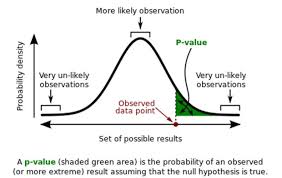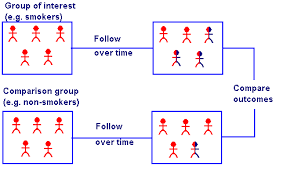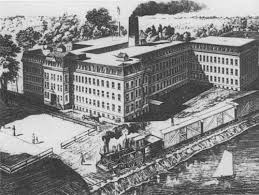
Assessing causality
Order Instructions:
Epi week 10
Assessing Causality
In 1965, Sir Austin Bradford Hill proposed guidelines for assessing causality. His intention was not for these to be used in a rigid manner but rather to be used as a guide.
For this Application Assignment, review your resources on Hill’s guidelines for causality. Then find a review journal article dealing with an association where causality is hypothesized based on an assessment of the body of literature on a topic. Analyze this article using Hill’s guidelines. Then respond to the following questions:
•Does the article use Hill’s guidelines to determine causality?
•If so, are they each addressed thoroughly?
•If not, describe the alternative means used for assessing causality.
•How well do you believe Hill’s guidelines work as a tool for determining causality for the association your review article addresses?
SAMPLE ANSWER
Assessing Causality
Hill’s Criteria of Causation basically delineates the minimal condition that is required to ascertain a causal relationship between 2 items. Sir Austin Bradford Hill originally presented these criteria as a method that can be utilized to determine the causal link between a given factor, for instance tobacco use, and an ill health, like lung cancer or emphysema (Doll, 2010). The criteria forms the starting point of contemporary epidemiological research that tries to find out scientifically valid causal links between possible disease agents and the multiple sicknesses which afflict people (Crislip, 2010). The criteria are nine. (i) Strength of the association: undoubtedly, if condition Y brings about outcome Z, then it has to be that Y and Z can be demonstrably related with each other. Simply put, the association should be sufficiently strong to be considered as clinically significant by the person reading the argument (Van Reekum, Streiner & Conn, 2009). (ii) Consistency of the evidence: if Y causes Z, then one should expect that evidence that supports this relationship would actually be found consistently (Crislip, 2010).
(iii) Specificity: given that illnesses could have different etiologies as well as therapies, this criteria is weaker. (iv) Temporal sequence: without a doubt, if Y causes Z, then Y must necessarily occur before Z. This is an essential criterion used to establish a causation argument (Crislip, 2010). (v) Biological gradient or dose-response: a large exposure has to result in a large effect, and a little exposure has to cause little effect. (vi) Biological rationale or plausibility: there is a higher chance of a causative relationship being present if it actually makes biological sense that Y results in Z. The association is in agreement with presently accepted understanding of pathological processes (Susser, 2008). (vii) Coherence: there is a higher probability that Y results in Z if this assumed causal relationship is similar to what is already known regarding the disorder or sickness. (viii) Experimental evidence: the health condition could be improved or prevented by a suitable experimental regimen. (ix) Analogous evidence: this criterion basically takes the form of supposing that if some condition which is the same as Y brings about an outcome the same as Z, then this is evidence that Z is caused by Y (Crislip, 2010; Doll, 2010).
Van Reekum, R., Cohen, T., & Wong, J. (2000). Can Traumatic Brain Injury Cause Psychiatric Disorders? The Journal of Neuropsychiatry and Clinical Neurosciences. 12:316-327. https://www.doi:10.1176/appi.neuropsych.12.2.316
Van Reekum et al. (2000) reviewed the evidence in supporting the argument that Traumatic Brain Injury (TBI) might result in psychiatric disorders and they employed the structure presented by some of Hill’s most pertinent criteria with the aim of critically examining the strength of this argument. The article uses some of Hill’s guidelines in determining causality. Not all of the criteria are addressed thoroughly.
In the article, Van Reekum et al. (2000) presented consistent evidence of an association between traumatic brain injury and several disorders from many studies. Nonetheless, most of this research was in fact narrowed to naturalistic follow-up studies. Not any of the studies used pre-TBI – prospective – psychiatric evaluations, so that the evidence for the apt temporal sequence was limited. Retrospective psychiatric evaluations suggested that nearly all of the psychiatric disorders start for the first time after traumatic brain injury. There is little evidence in the article of biological gradient for psychiatric disorders after traumatic brain injury in adults. This suggests either that presently available approaches to measuring the severity of traumatic brain injury are insufficient or, on the other hand, that traumatic brain injury increases the risk of psychiatric disorders notwithstanding the TBI severity (Van Reekum et al., 2000). There was substantial evidence supporting a biologic rationale that is in fact cohesive with the existing, modern knowledge; it has been found that traumatic brain injury actually disrupts neuronal systems that underlie behavior and mood (Van Reekum, Streiner & Conn, 2009). The other causal factors to psychiatric disorders post traumatic brain injury were also preliminarily recognized, for instance the existence of pre-TBI psychiatric disorders in some instances.
Hill’s guidelines are very effective as a tool for determining causality for the association that the article review addresses. In essence, Hill’s guidelines in reviewing the evidence for the argument of causation presented by Van Reekum et al. (2000) was useful for several reasons. The structure provided by the guidelines allowed for systematic review of every available evidence and to find its place within the argument. It is of note that where the data were not consistent with the causation argument, this served to encourage the creation of new hypotheses, for instance the lack of a biological gradient indicated that traumatic brain injury of even mild seriousness can be able to disrupt neuronal circuits that underlie psychiatric disorders. Using the guidelines emphasized the methodological drawbacks in future research. Moreover, using the guideline permitted the review to move further than the ascertainment of a simple connection between psychiatric disorders and TBI by encouraging consideration of extra criteria which support the argument.
References
Crislip, M. (2010). Causation and Hill’s Criteria. Boca Raton, Fl: CRC Press.
Doll, R. (2010). Sir Austin Bradford Hill and the Progress of Medical Science. British Medical Journal, 305: 1521-1526
Susser, M. (2008). Judgment and Causal Inference: Criteria in Epidemiologic Studies. American Journal of Epidemiology, 105:1-15
Van Reekum, R., Cohen, T., & Wong, J. (2000). Can Traumatic Brain Injury Cause Psychiatric Disorders? The Journal of Neuropsychiatry and Clinical Neurosciences. 12:316-327. http://www.doi:10.1176/appi.neuropsych.12.2.316
Van Reekum, R., Streiner, D. L., & Conn, D. K. (2009). Applying Bradford Hill’s Criteria for Causation to Neuropsychiatry: Challenges and Opportunities. J Neuropsychiatry Clin Neurosci,13(3).
We can write this or a similar paper for you! Simply fill the order form!












